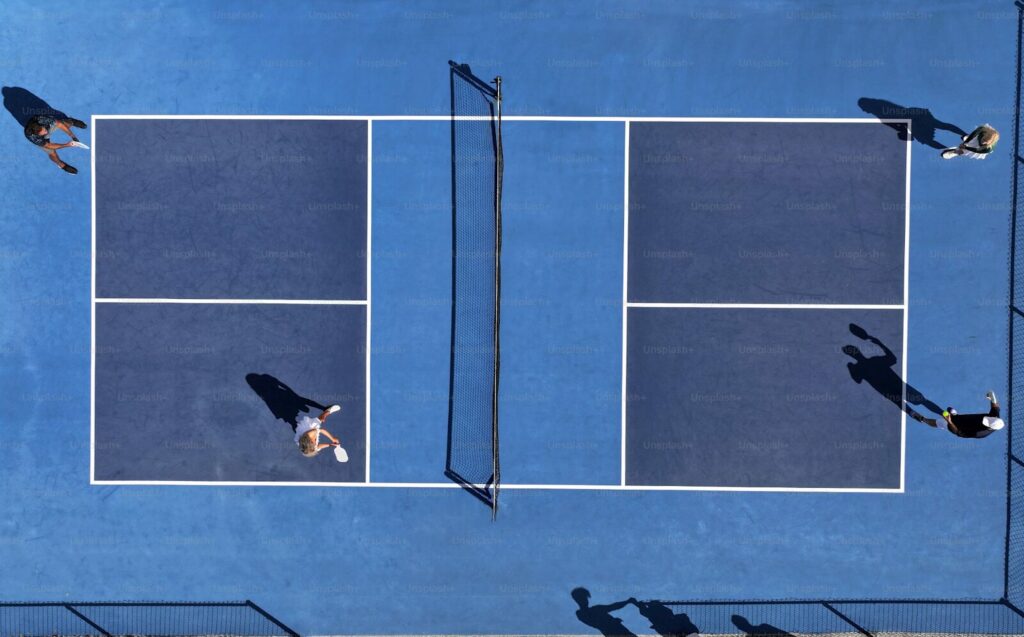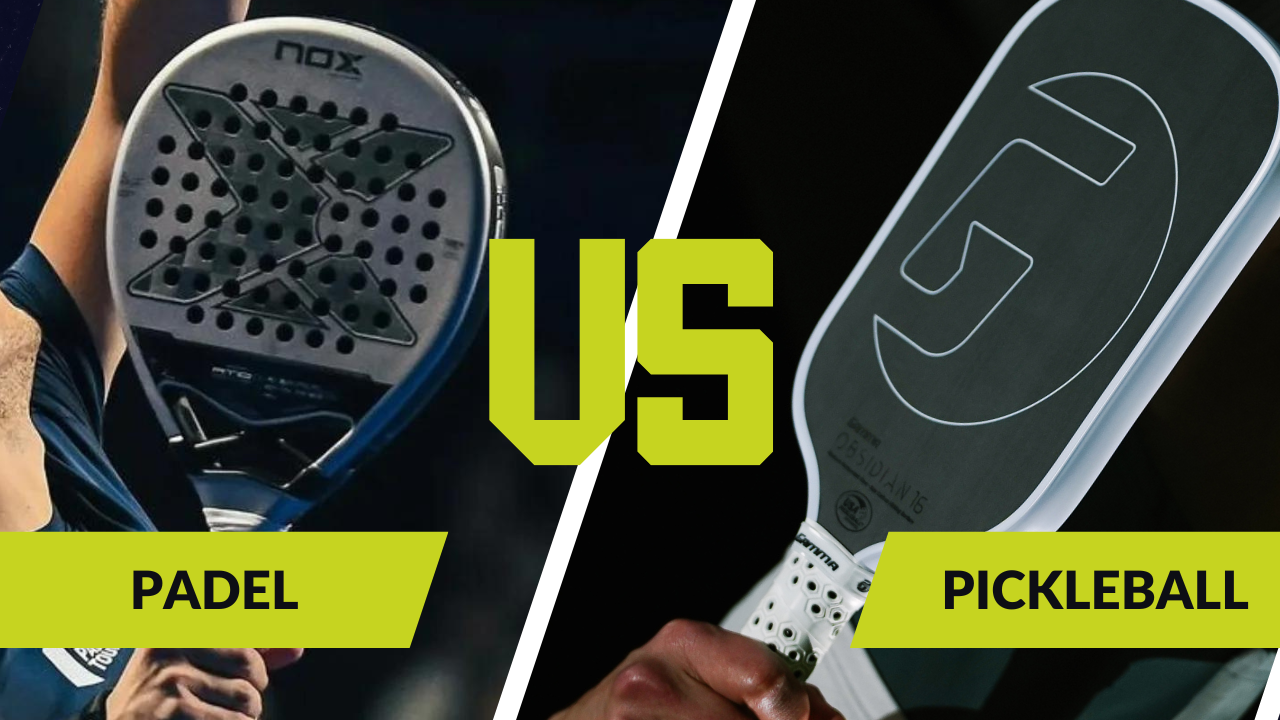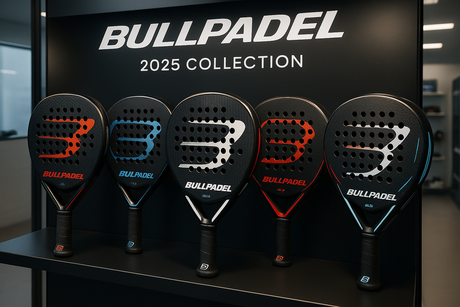As two of the fastest-growing racquet sports, padel and pickleball share similarities but deliver distinct on-court experiences. Below, we break down origins, courts, equipment, gameplay, and skills so you can decide which one fits you best — or enjoy both.
Table of Contents
1) Origin and Popularity
Padel originated in Mexico in the 1960s and expanded rapidly through Spain, Argentina, and the rest of Europe and Latin America. It’s now growing fast in North America thanks to its strategic, high-energy rallies.
Pickleball also began in the 1960s in the U.S. as a family game. Its simplicity and accessibility fueled an American boom, drawing players of all ages and levels.

2) Differences between padel and pickleball courts
Padel court
An enclosed 20m × 10m space with glass walls and metal fencing, where rebounds are part of play. Net height centers around ~34.6 inches. Padel is primarily doubles, rewarding teamwork and angles.

Pickleball court
Open court about the size of badminton (20 ft × 44 ft). Net sits ~34 inches at the center. Played as singles or doubles; no walls — once the ball is out, it’s out.

3) Racket/Paddle and Ball Differences
Padel
Rackets: Solid, perforated, composite builds (no strings) for maneuverability and control. Browse our padel rackets.
Balls: Similar to tennis but generally lower pressure for a slightly slower, more controllable bounce inside enclosed courts.
Pickleball
Paddles: Solid, flat face (no holes) in composite/polymer builds, larger than padel rackets.
Balls: Lightweight plastic with holes (indoor/outdoor variants), demanding timing and precision.

4) Gameplay and Scoring
Padel gameplay
Best-of-three sets with tennis scoring. Glass rebounds add layers of strategy: shot placement, anticipation, and partner positioning are key.
Pickleball gameplay
Games to 11 (win by 2); only the serving team scores. Focus on placement, dinks, and control. The “kitchen” (non-volley zone) encourages finesse over constant net smashes.
5) Skills and Strategies
Padel
Emphasizes positioning, reading rebounds, and smart teamwork. Quick reflexes and angled patterns dominate rallies.
Pickleball
Rewards footwork, paddle control, and soft-hands tactics. Precision and patience often beat raw power.
6) Which One Is Right for You?
If you enjoy a strategic, high-energy doubles game with wall play, try padel. If you prefer a social, accessible game emphasizing control and touch, explore pickleball. There’s no rule against loving both.
Final Thoughts
Both sports offer unique communities and skill paths. When you’re ready to gear up, visit Racket Central to find equipment that matches your level and style.











